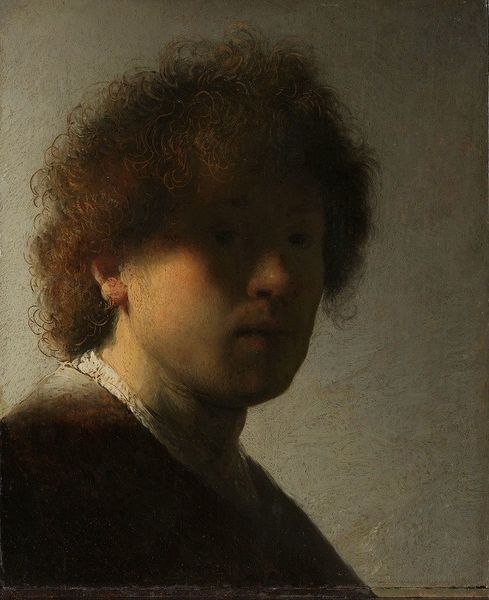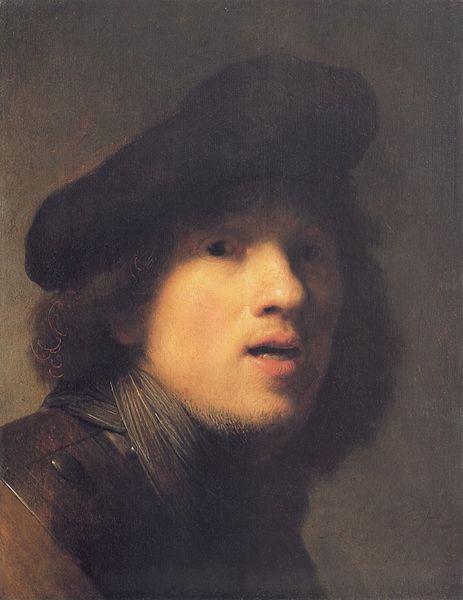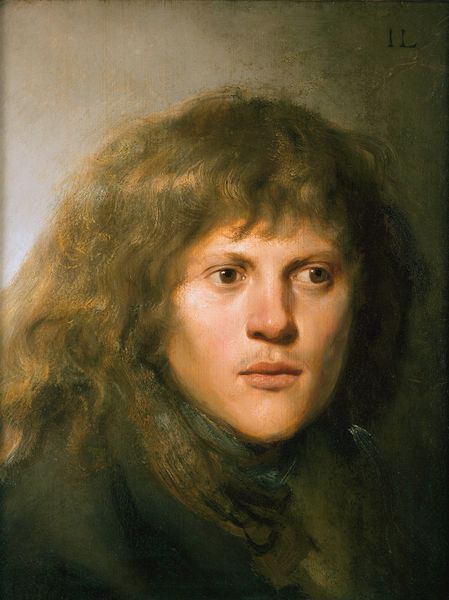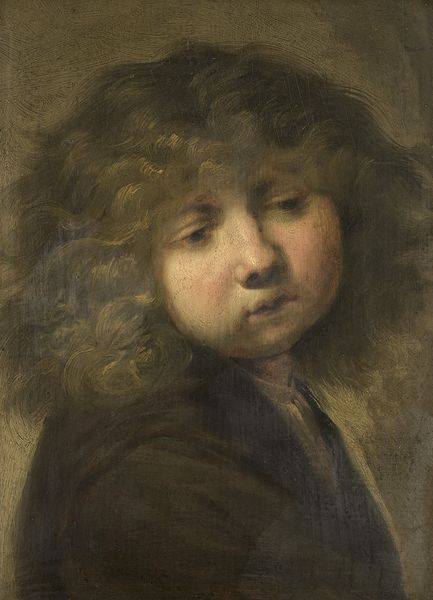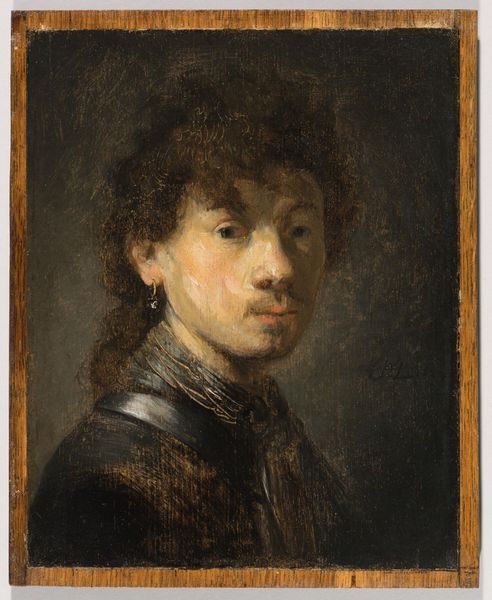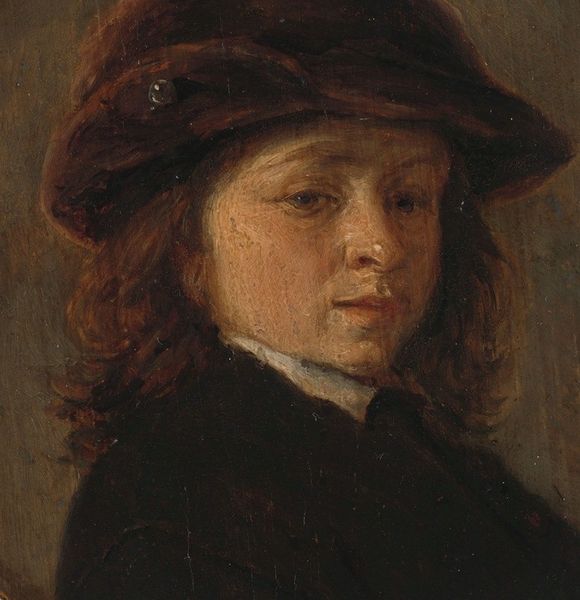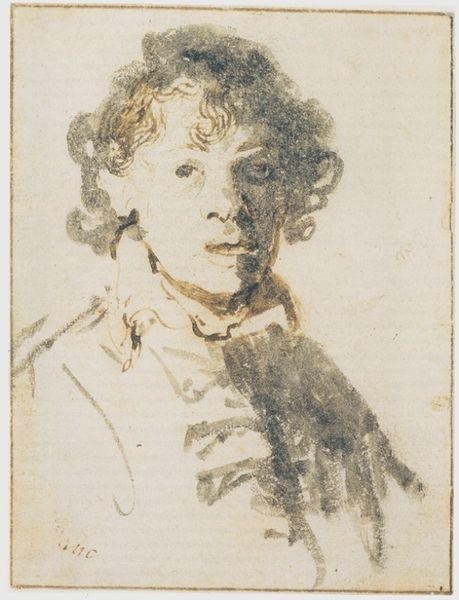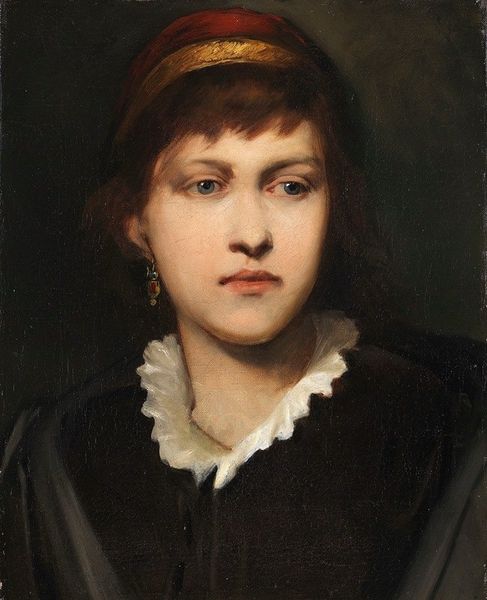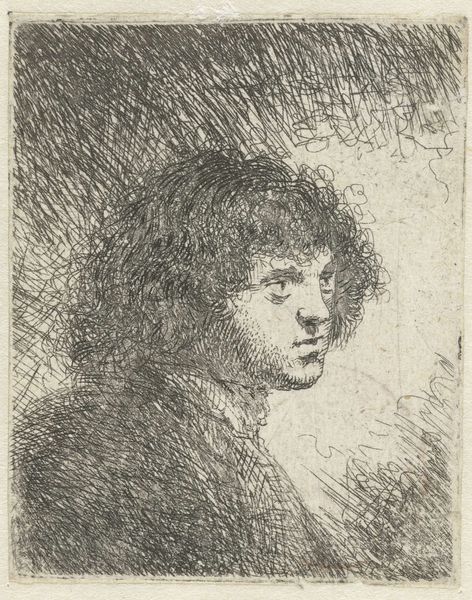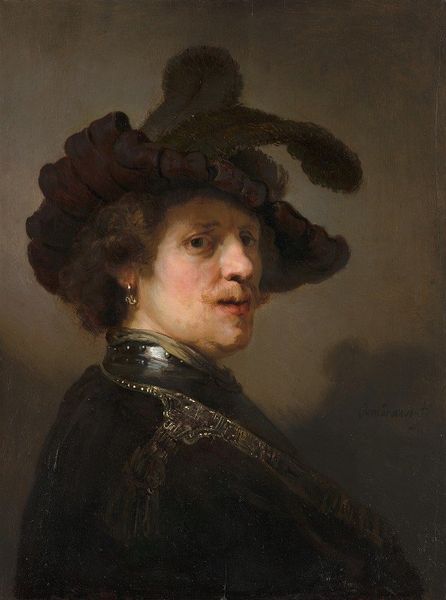
oil-paint
#
portrait
#
self-portrait
#
baroque
#
dutch-golden-age
#
oil-paint
#
history-painting
#
realism
Dimensions: 12.7 x 15.5 cm
Copyright: Public domain
Curator: So, we’re looking at Rembrandt van Rijn's "Self-Portrait at an Early Age," painted around 1629, here in the Alte Pinakothek. What strikes you first? Editor: It's the light, or rather, the almost willful obscuring of light. Most of the face is shadowed. It makes me think about the physical process. Did he strategically block light while painting? What kind of lamps would he have used? Curator: It feels like the dawn of self-awareness, doesn't it? He's peering into the gloom, almost shyly. You sense the potential, the genius, but he hasn’t fully stepped into his power yet. Editor: Absolutely. And speaking of materials, it would be amazing to know precisely the composition of the oil paints he used. Were his pigments locally sourced, or did global trade networks play a role in creating those earthy tones? You can't talk about Dutch Golden Age painting without acknowledging colonial exploits, you know. Curator: A fair point. But the self-portrait as a form is such an interesting exploration of ego and interiority. Look at the impasto, particularly around the hair—it’s like an explosion of energy contained right there on the canvas. A halo perhaps? Editor: See, I look at that paint handling and think of workshop practices. How much was Rembrandt's own hand versus an assistant's? The myth of the solitary genius obscures the very real, often collective labor involved in art production. Did he grind his own pigments or buy them premade? It all matters. Curator: But that very tactile quality contributes to this overwhelming sense of…presence. Despite the shadow, there’s an intimacy that transcends the purely material. He’s inviting you into a conversation across centuries, as raw and immediate as when he applied that paint. Don't you think? Editor: I'll concede there's a certain allure to seeing the evidence of labor so plainly. But acknowledging that labor also humanizes Rembrandt. It acknowledges the material conditions that made his artistic output possible, while preventing the usual, unquestioning celebration of mastery. Curator: Perhaps it also proves how art is the fusion of ideas and actions; what would one do without the other? In this self-portrait, Rembrandt shows not only his identity and spirit but also reveals the basic ingredients of artistic creation. Editor: Well put. It really showcases the complexity, where vision meets material.
Comments
No comments
Be the first to comment and join the conversation on the ultimate creative platform.
